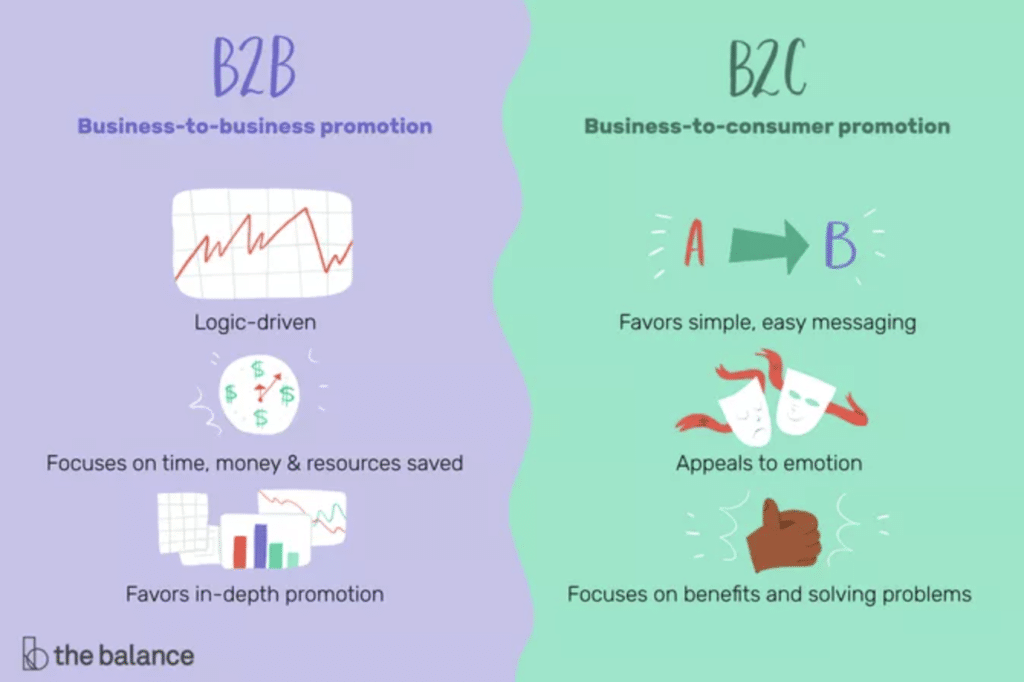You may have planned a robust digital marketing strategy across multiple channels. Between paid ads, social media, email campaigns, and content marketing, you are checking every box on the list.
But how effective is your strategy? Which channel is producing the most valuable leads? This is where B2B web analytics comes into play.
Without knowing your results, B2B marketing can be like throwing things at a wall to see what sticks. You can waste money and resources testing theories and may never truly hit the mark. B2B web analytics can help you identify how to target your efforts better.
What Is B2B Web Analytics?
The number of customers that are interested in your business is potentially limitless. But they have to find you, find the information that they are looking for, and take the next step to contact you. B2B marketing is vastly different from B2C because the customers are not simply “add to cart” shoppers.

You may have a flood of visitors to your website, but they don’t take any action. You don’t know how they found you. You may not even know if they are qualified leads in the first place.
Understanding these visitors and other interactions with your marketing efforts is crucial in turning these visitors into leads. Your overall conversion rate will increase when you use analytics to your advantage.
There are two main things to consider when you are looking at B2B web analytics.
1. Dimensions, or the Attributes of a Visitor. The dimensions will be things like the geographical region, the technology used, and demographic profile.
2. Metrics. These will be things like the number of visitors, pageviews, session duration, and bounces.
Gathering information is the first step. Putting that information to work is the next challenge.
Why Analytics Are Important for Your Business
The data is going to tell you how your different marketing efforts are performing. You can look at short-term initiatives as well as long-term goals.
Ideally, the data will give you enough information that you can adjust your efforts as needed. You can turn that data into action items as you plan your marketing strategy. Specifically, the data should be able to help with the following:
Maximize Your Ad Spending
If you are spending money across multiple channels, you should compare the performance and outcomes. It’s not only about clicks, but also how many clicks resulted in a conversion.
For example, tracking analytics on Google with a PPC campaign may reveal that some keywords perform better than others. Choosing the right keywords and monitoring the traffic will help you determine how much to spend to get the results you want.
Insights into Competitor Data
How your competitors are doing is crucial to making your marketing efforts successful. Those that are succeeding have likely found a combination of strategies that are bringing in conversions. Assuming they have already made some mistakes, you can learn from their efforts.
There are several insights you can gain through different tools available, including:
- Domain Authority: How will Google rank the website?
- Backlinks: How many links from external sites do they have?
- Keywords: What keywords in your industry are being used?
- Site Traffic: How many impressions are received?
Understand User Behaviors
When visitors land on your website, what do they do? What pages do they visit, and how much time do they spend there? Are they accessing your website on a mobile device or from a desktop?
User behavior tells you something about what the users are looking for and if they found it. You should be able to track the user across your various pages. If they are spending a lot of time but never submitting a form or responding to a CTA, then you need to figure out how to get them to that next step.
The more time spent on your site, the more engaged the user is. You can monitor the source of the visitor, whether it was from an ad campaign or a social media post, to know what users are absorbing your content as a willing audience.
Prioritize Different Channels
You need to meet your users where they are. If they are coming to your site as a result of an email campaign, then focus your efforts on emails. If blog posts are a primary driver of traffic, then make sure you create quality content and push it out across multiple channels.
Your analytics should tell you where the users are and how they are responding. Unsubscribes, low impressions, and less time spent on your site tell you a similar story that your efforts are not working in that particular channel.
You can make more informed decisions when you connect the dots on the data you have. It may take some digging to make sense of the insights, but the more data you collect over time, the better you can react. Ultimately, you want to prioritize the channel that is maximizing ROI.
Tools Needed For Tracking Analytics:
Fortunately, there are a lot of B2B web analytics tracking solutions available to gather data. These tools can help with your own website and channel analytics, as well as competitor research.
Google Analytics is the powerhouse in the marketplace. It is free, and nearly 40 million sites rely on it, including 51% of Fortune 500 companies.
In addition to data collection and management from your website, Google Analytics can measure campaign traffic and give you audience reports. You can visually see the flow of user behavior on your pages and track goals for conversions.
Of course, there are some downsides to Google Analytics. It doesn’t do much to determine your visitors’ lifetime behavior since the focus is on individual sessions. It also doesn’t track behavior through the entire funnel, such as email campaigns.
For more advanced features, you might try paid tools that can help you dig a little deeper into all of your marketing efforts.
B2B Web Analytics Implementation
With any of these tools, you need to think about how you would implement them within your organization. You will need resources to help you set up the web analytics and mine through the data results.
You should create a plan for web analytics implementation around the questions you want to answer. The web analytics solution you choose should give you the valuable metrics you need in a meaningful way.
Here are some key questions to guide you as you prep for implementation:
- What are your goals from an organizational standpoint? Are you creating a new SEO campaign? Trying to optimize your website conversion rate? Looking to determine ROI on your LinkedIn ads?
- What are your primary kpis / conversion points? Common examples include form submissions, demo requests, whitepaper downloads, chat bot requests, etc.
- What tools do you use? This list will be what you need to intergrate into your data management platform. Examples include Drift, Facebook Ads, Google Ads, Linkedin, your Website, Hotjar, Calendly, etc.
- Set up. It’s crucial to have somone in your organization or an analytics vendor that can help you set up your program correctly from the start. That all of your tools are connected, conversion points are implemented, and your executive overview dashboard has been created for whoever needs to regularly review the data.
- Verification. You should test that your data is coming in correctly, isn’t muddied with innacuracies, conversions are tracking properly, and the correct filters have been set up.
Important KPIs and Metrics:
Any B2B web analytics tool will likely give you more than you need. The key is knowing what KPIs and metrics are important for your business. You don’t want to spend too much time chasing information that would not impact your strategy.
Here are a few questions that you will want your metrics to answer on an ongoing basis:
- How much traffic is your website receiving?
- How much of the traffic is new versus returning visitors?
- How much traffic is coming from each source/channel?
- How many pages is a visitor hitting?
- How much time is a visitor spending on each page?
- How many conversions are you receiving from your website?
- How man website conversions result in closed sales?
As you gather this information, look for trends. You can break down your analytics into month-over-month reports, as well as compare results annually.
Beyond your web analytics, you need to compare to your actual sales results. That is the ultimate test of the effectiveness of your marketing strategy.
If you are receiving a lot of leads, but these leads are not qualified, then the effort was not effective. Somehow your content is not giving the right message and attracting the wrong visitors. It could be that the channel that produces the wrong traffic is also not the best source for qualified leads.
Of course, not every lead will result in a closed sale. As you track the incoming leads, try to identify those that are qualified leads. If qualified leads do not result in closed sales, there are factors to consider that may be beyond marketing scope.
Reporting Best Practices
Of course, you will likely not be the only person interested in your web analytics. Taking the data and turning it into a consolidated report will be another step. Reporting needs to be easy to consume and reflect your results compared to your targets.
Reporting from your web analytics should give a breakdown of the visitors in terms of traffic and conversions. You should identify the preferred channels of your audience and the traffic driven as a result. Finally, you should look at content engagement and how much is consumed by your audience.
If you have set goals for conversions, you will want your report to reflect whether the goals are met. Goals can be anything from a Contact Us Form or requesting a demo. Goals can also include engagement, such as the number of pages visited by each visitor or downloading a brochure.
Using Analytics to Improve Your Marketing Strategy
You may be able to gather a lot of data, but how to interpret B2B web analytics is another challenge. It can be frustrating to think you’ve found a way to reach a larger audience, only to have lackluster results. You may find that you haven’t made the right assumptions about your users’ behavior or that you have conflicting or murky data.
Doorbell Digital Marketing offers B2B web analytics services to help you form the best data-led strategy. Contact us today for more information.













